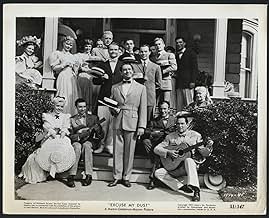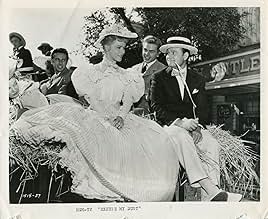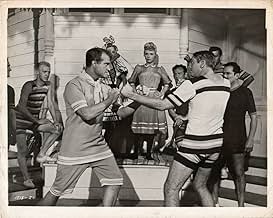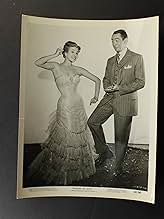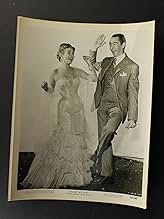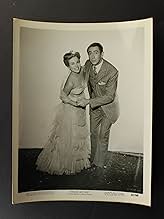IMDb RATING
6.0/10
435
YOUR RATING
In 1895, a small-town inventor faces ridicule over his gasoline-powered car. His girlfriend supports him, but success brings romantic complications. During a horseless vehicle race, he needs... Read allIn 1895, a small-town inventor faces ridicule over his gasoline-powered car. His girlfriend supports him, but success brings romantic complications. During a horseless vehicle race, he needs his loyal girlfriend's help.In 1895, a small-town inventor faces ridicule over his gasoline-powered car. His girlfriend supports him, but success brings romantic complications. During a horseless vehicle race, he needs his loyal girlfriend's help.
Herbert Anderson
- Ben Parrott
- (as Guy Anderson)
Jessie Arnold
- Woman on Street
- (uncredited)
Polly Bailey
- Woman on Street
- (uncredited)
Featured reviews
MGM was never a good studio for slapstick comedians, but this time they got it right. Red Skelton had the misfortune to appear in a group of inept comedies for MGM which missed the mark for the most part. This comedy is terrific and Skelton is terrific in it. The comedy is set at the turn of the 20th Century with Skelton as an ambitious, but accident prone, inventor working on an early automobile. Although he is not given much in the way of witty dialogue, he is given ample opportunity to show his physical comedy skills. Although he plays a misunderstood dreamer, Skelton does not play a total nincompoop. While still a mugging comedian, he is likable and sympathetic. The supporting cast is just right with Macdonald Carey as Skelton's rival, Herbert Anderson as Skelton's straight man, Sally Forrest as his love interest and supporting character actors William Demarest and Raymond Walburn adding to the comedy. Monica Lewis is cast as the soubrette and is given two clever specialty numbers by Arthur Schwartz and Dorothy Fields. Forrest is given a good dance specialty. Skelton gets to sing the best song in the score, "Spring Has Sprung". The screenplay contains some clever satire concerning the industrial age, and, of course, there is the obligatory auto race at the end of the picture. The Technicolor photography is beautiful, but it does not take away from the comedy. This is a really fine, feel good, slapstick opus.
Watching Excuse My Dust I couldn't help thinking that this would have been a better vehicle for that other redheaded comedian Danny Kaye. The character of the inventor would have suited Kaye's persona far better than Red Skelton.
That being said Red did well enough with this comedy set in those Gay Nineties when he's one of many people who are starting to experiment with the horseless carriage. He might not follow through well enough with the execution, but he's definitely got the right idea as he's got prototype vacuum cleaners and garbage disposal machines as well.
But when you're courting Sally Forrest and her father William Demarest makes his living with a livery stable that causes most of Red's problems. Not to mention pretentious vamp Monica Lewis who's from St. Louis, but her year abroad has her sporting a French accent.
I have to single out MacDonald Carey who looks like he was having a ball playing Red's rival in romance and racing. All Carey had to do was grow a handlebar mustache long enough for twirling. He was doing a great Snidely Whiplash.
Excuse My Dust is a pleasant enough Red Skelton comedy. Arthur Schwartz and Dorothy Fields wrote some rather forgettable songs. Danny Kaye could have gotten in on the musical numbers.
But Skelton fans will like this.
That being said Red did well enough with this comedy set in those Gay Nineties when he's one of many people who are starting to experiment with the horseless carriage. He might not follow through well enough with the execution, but he's definitely got the right idea as he's got prototype vacuum cleaners and garbage disposal machines as well.
But when you're courting Sally Forrest and her father William Demarest makes his living with a livery stable that causes most of Red's problems. Not to mention pretentious vamp Monica Lewis who's from St. Louis, but her year abroad has her sporting a French accent.
I have to single out MacDonald Carey who looks like he was having a ball playing Red's rival in romance and racing. All Carey had to do was grow a handlebar mustache long enough for twirling. He was doing a great Snidely Whiplash.
Excuse My Dust is a pleasant enough Red Skelton comedy. Arthur Schwartz and Dorothy Fields wrote some rather forgettable songs. Danny Kaye could have gotten in on the musical numbers.
But Skelton fans will like this.
In reviewing the so-called golden age of the MGM musical, sometimes it's instructive to bypass the big, accomplished, but pretentious famous titles (An American In Paris, The Band Wagon, On the Town, Kismet) and skip to the smaller movies produced by someone other than Arthur Freed. This 1951 tuner from the Jack Cummings unit is probably Red Skelton's best movie, which may not be saying much, but it's a very smart and pleasing little musical that doesn't wear out its welcome (it's a trim 80 minutes or so). Red's dopey slapstick is kept to a minimum (just two set pieces, at the beginning and the end), and what's in between is surprisingly gentle and well-written Americana -- in sunny Technicolor. The underrated score, by Dorothy Fields and Arthur Schwartz (who wrote another wonderful score for Broadway that year, the equally underrated "A Tree Grows In Brooklyn"), is solidly integrated into the plot, and the musical staging, by Hermes Pan, is bright and inventive. (The movie contains what may be the least plot-motivated "dream ballet" ever, but even it's quick and unpretentious.) Sally Forrest is pretty as a picture and a heck of a dancer, and Monica Lewis socks two comedy numbers across. They will help you past the dum-dum physical comedy that was Skelton's stock in trade.
It's no award-winner, nor did it do much at the box office, but it holds up much better than some of the bigger, weightier MGM titles.
It's no award-winner, nor did it do much at the box office, but it holds up much better than some of the bigger, weightier MGM titles.
Red Skelton is an inventor in a small town in Indiana in 1895, anxious to invent a working automobile. He and Sally Forrest are in love. She is the daughter of William Demarest, the owner of a livery stable. His principal rival is Macdonald Carey. It all ends with a marvelous race among competing motorists that was directed by Buster Keaton, although Roy Rowland is the credited director.
There are various anachronisms that set my teeth on edge, like the use of the word "jass" -- for early jazz music. In reality, the word can't be traced back earlier than about 1912, and then it was in reference to baseball. Likewise, Miss Forrest is given a modern dance number, shoehorned into a dream sequence. If it seems to bear a relationship to the "Girl Hunt" number from THE BAND WAGON, well, Arthur Schwartz provided the music for three songs (with Dorothy Fields writing the lyrics) and Hermes Pan did the choreography.
There are fewer typical Red Skelton comic bits, but the final race is a fine series of comic disasters. By then, however, it was a little late in the show. Although it's worth watching, it's not one of Skelton's best starring vehicles. With Raymond Walburn, Jane Darwell, and Paul Harvey.
There are various anachronisms that set my teeth on edge, like the use of the word "jass" -- for early jazz music. In reality, the word can't be traced back earlier than about 1912, and then it was in reference to baseball. Likewise, Miss Forrest is given a modern dance number, shoehorned into a dream sequence. If it seems to bear a relationship to the "Girl Hunt" number from THE BAND WAGON, well, Arthur Schwartz provided the music for three songs (with Dorothy Fields writing the lyrics) and Hermes Pan did the choreography.
There are fewer typical Red Skelton comic bits, but the final race is a fine series of comic disasters. By then, however, it was a little late in the show. Although it's worth watching, it's not one of Skelton's best starring vehicles. With Raymond Walburn, Jane Darwell, and Paul Harvey.
Fans of Red won't find him doing one of his ditzy characters here. Instead, most of the comedy comes from the set-ups with Red reacting in often normal ways. He's an inventor, most importantly of one of the first gas-mobiles (cars), whose worth he's got to prove against defenders of the horse & buggy. At the same time, he's got to somehow wangle lady-love Sally Forrest away from her cranky old livery stable owner father, Bill Demarest. And it doesn't help that rival Macdonald Carey's out to sabotage Red at every turn. So there's plenty of plot to drive things along.
My guess is that the biggest attraction now are those picturesque old autos that amount to a real curiosity. The climactic auto race provides a good chance to sample the various experimental modes of propulsion, from steam to electricity to gasoline. Then too, some of the talk about polluting autos seems almost contemporary. Nonetheless, the rural picnic scenes are utterly charming and visually compelling, along with Monica Lewis' spirited warbling and Forrest's imaginative dance number. All in all, the movie's an unexpectedly interesting and lively slice of entertainment, though not the best showcase for Skelton's brand of slapstick humor.
My guess is that the biggest attraction now are those picturesque old autos that amount to a real curiosity. The climactic auto race provides a good chance to sample the various experimental modes of propulsion, from steam to electricity to gasoline. Then too, some of the talk about polluting autos seems almost contemporary. Nonetheless, the rural picnic scenes are utterly charming and visually compelling, along with Monica Lewis' spirited warbling and Forrest's imaginative dance number. All in all, the movie's an unexpectedly interesting and lively slice of entertainment, though not the best showcase for Skelton's brand of slapstick humor.
Did you know
- TriviaThe original "Morgan" automobile in La splendeur des Amberson (1942) was also used in this film.
- GoofsA few times during the race, wide tire tracks from more modern automobiles can be seen on the dirt roads.
- ConnectionsFeatured in The Metro-Goldwyn-Mayer Story (1951)
- SoundtracksI'd Like to Take You Out Dreaming
Music by Arthur Schwartz
Lyrics by Dorothy Fields
Performed by Macdonald Carey and Chorus
Details
Box office
- Budget
- $1,789,000 (estimated)
- Runtime
- 1h 22m(82 min)
- Aspect ratio
- 1.37 : 1
Contribute to this page
Suggest an edit or add missing content



